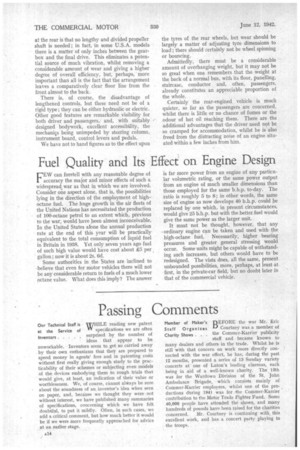P assing Comments Our Technical Staff is VUHILE reading new patent
Page 16

Page 17

If you've noticed an error in this article please click here to report it so we can fix it.
at the Service of VI' specifications we are often Inventors surprised by the number of ideas that appear to be unworkable. Inventors seem to get so carried away by their own enthusiasm that they are prepared to spend money in agents' fees and in patenting costs without first really giving enough study to the practicability of their schemes or subjecting even models of the devices embodying them fo rough trials that would give, at least, an indication of their value or worthlessness. We, of course, cannot always be sure about the soundness of an inventor's idea when seen on paper, and, because we thought they were not without interest, we have published many summaries of specifications, concerning which we have felt doubtful, to put it mildly. Often, in such cases, we add a critical comment, but how much better it would be if we were more frequently approached for advice at an earlier stage. Member of Maker's BEFORE the war Mr. Eric
Courtney was a member of the Commer-Karrier publicity
Charity Shows . . . staff and became known to many dealers and others in the trade. Whilst he is still with that concern on work more directly connected with the war effort, he has, during the past 12 months, presented a series of 13 Sunday variety concerts at one of Luton's leading cinemas, each being in aid of a well-known charity. The , 13th was for the Wardown Division of the St. John Ambulance Brigade, which consists mainly of Commer-Karrier employees, whilst one of the productions during 1941 was for the Commer-Karrier contribution to the Motor Trade Fighter Fund. Some 40,000 people have attended the shows, and many hundreds of pounds have been raised for the charities
concerned. Mr. Courtney is continuing with this excellent work, and has a concert party playing to the troops.
Work for Many A N interesting estimate of Years Following Our d–Icertain sections of post-war
Victory reconstruction and develop ment was made a few days ago at the annual meeting of the building industry's national council. It was to the effect that on the civil engineering side alone some 300,000 workpeople would be required, whilst on building more than 1,000,000 would be needed. The annual expenditure involved would be something like 000,000,000 for the 10 years following the conclusion of hostilities. This, combined with the recent announcement that bombed buildings at Malta would take some 60 years to replace, will give some idea of the amount of work which will be rendered available, provided that the necessary money be forthcoming. In these and other activities, road transport will undoubtedly be called upon to play a great part.
THE conservation of tyres and inner tubes is extremely important, and a few notes on how they should be stored, where this is necessary and possible, may be of interest. They should be kept in a cool place, as direct sunlight causes rapid deterioration. Circulation of air hastens oxidation and ageing of rubber, consequently where draughts may occur they should be covered. .Stretched rubber oxidizes and breaks down far more rapidly. Piling creates tension in the centre of the tread. Tubes should be removed from their cartons and rounded under slight air pressure, not sufficient to cause stretching, as when left folded there is tension at the edges. Dampness may injure the cotton structure, and boards should be laid over the floor. Oil or grease, of course, causes swelling and softening.
Some Points on the Storing of Tyres and Tubes




















































